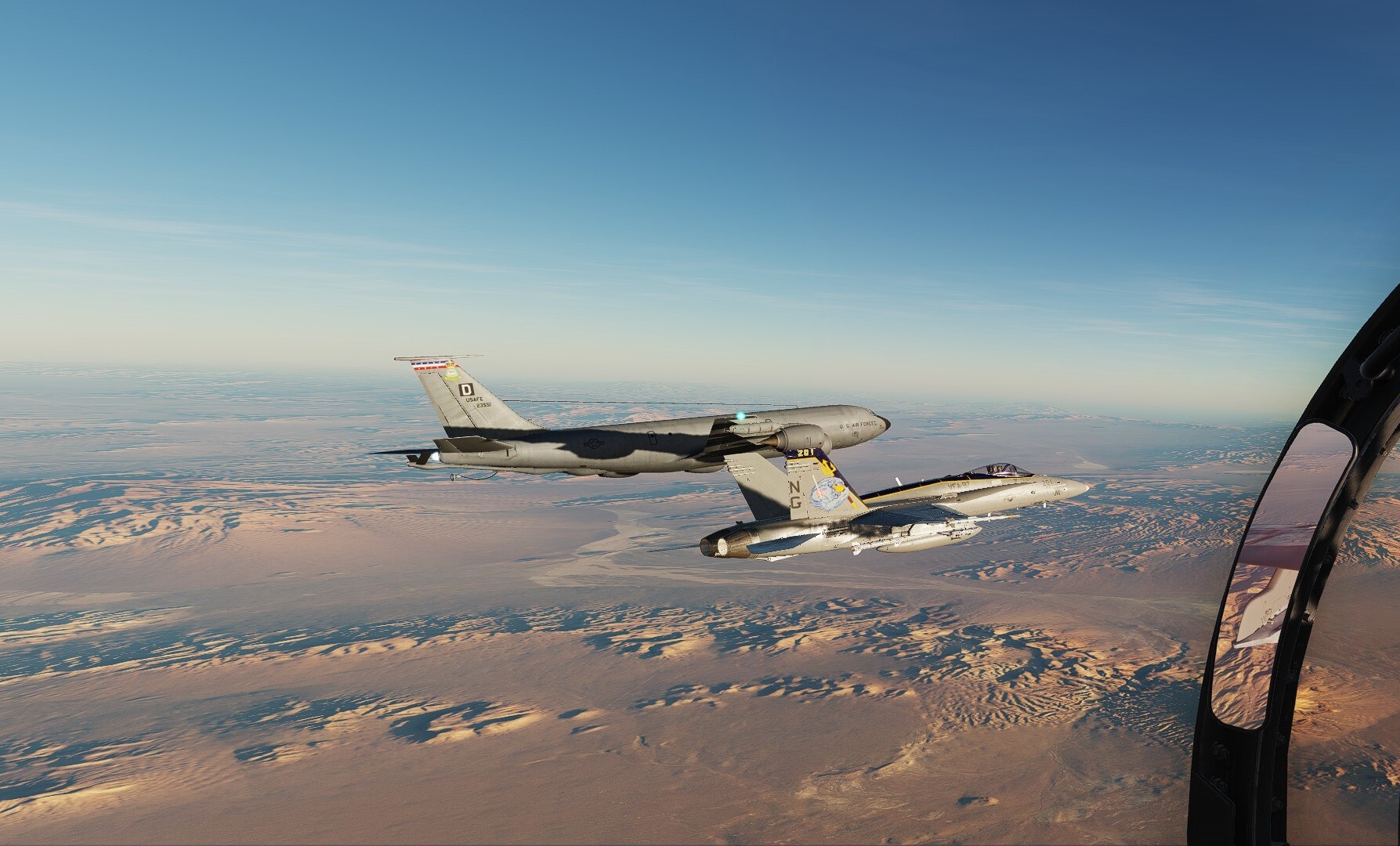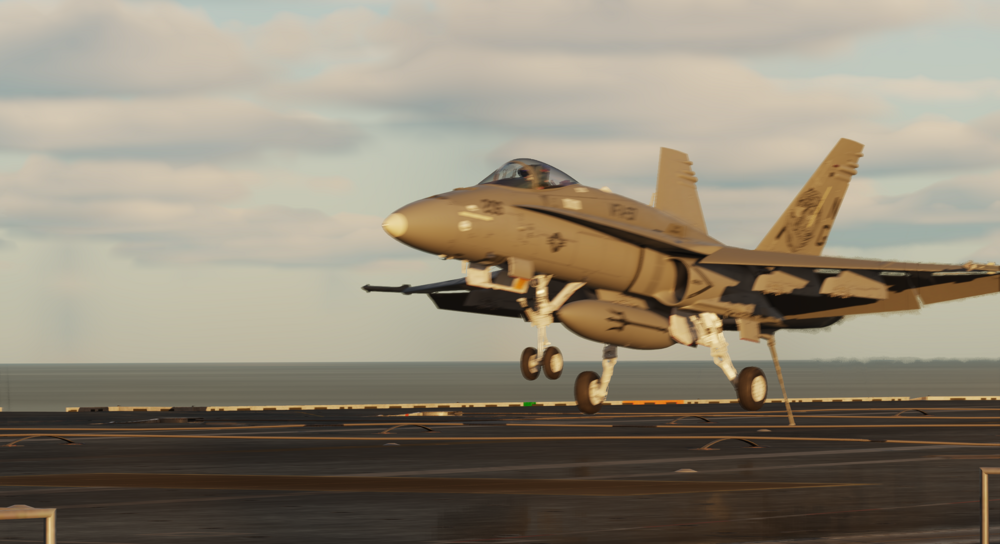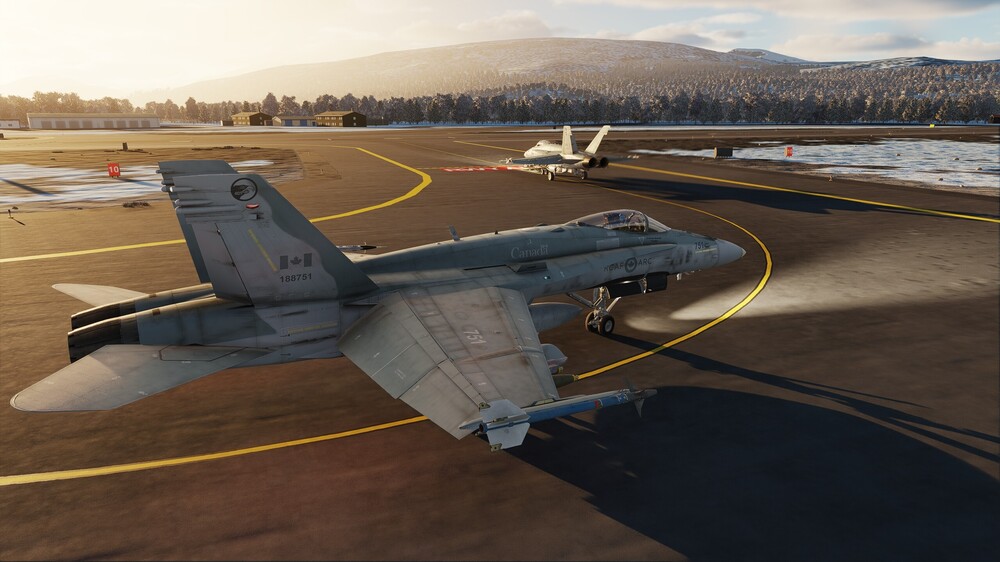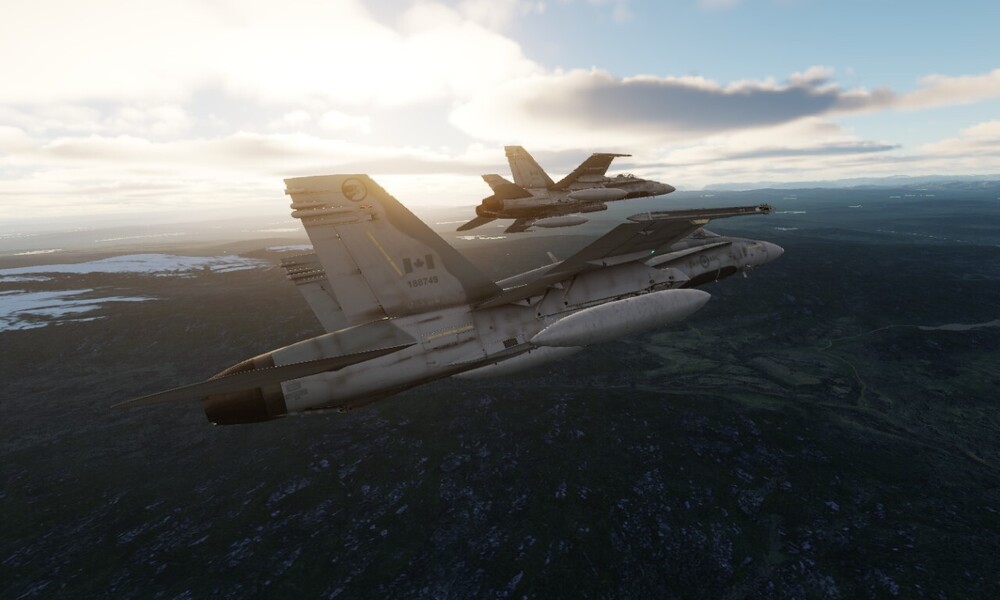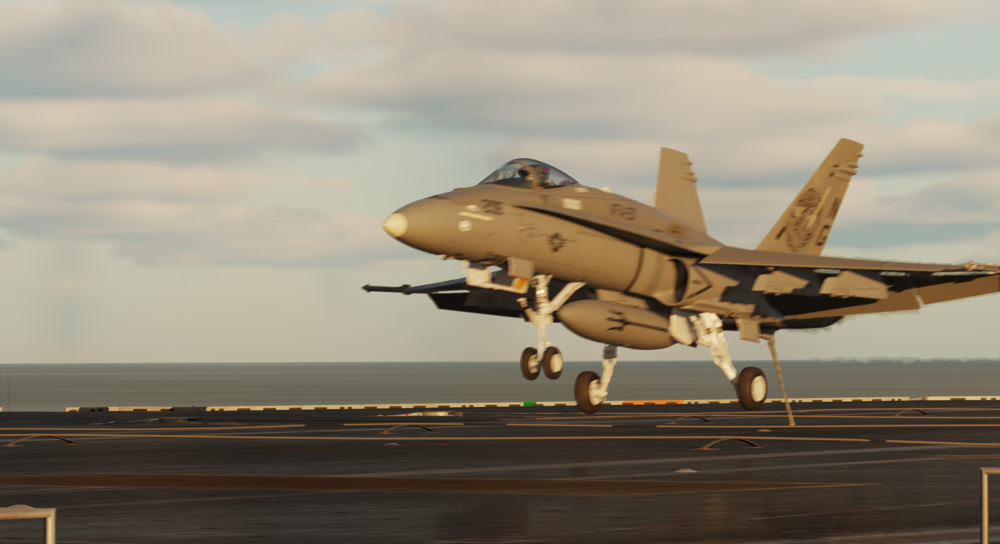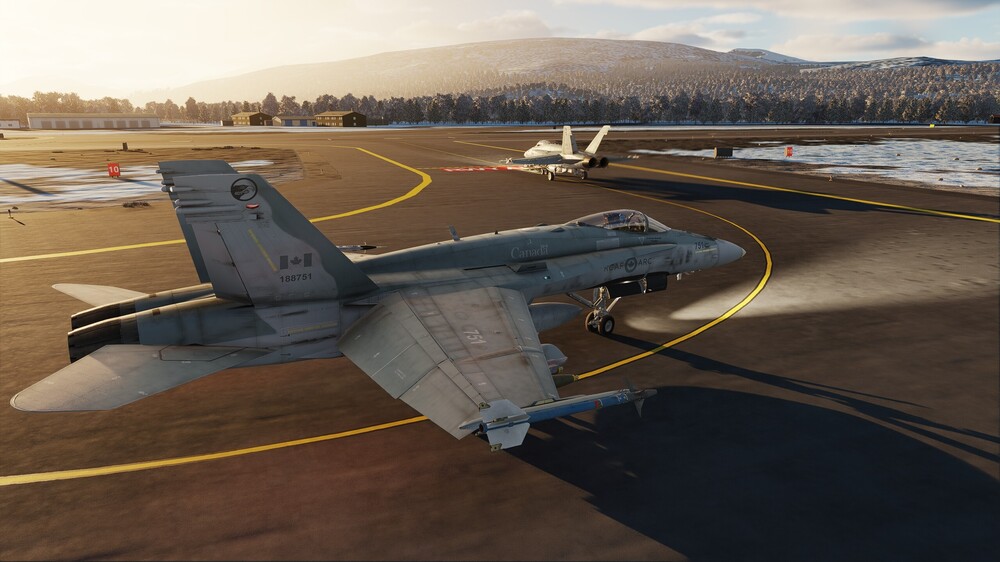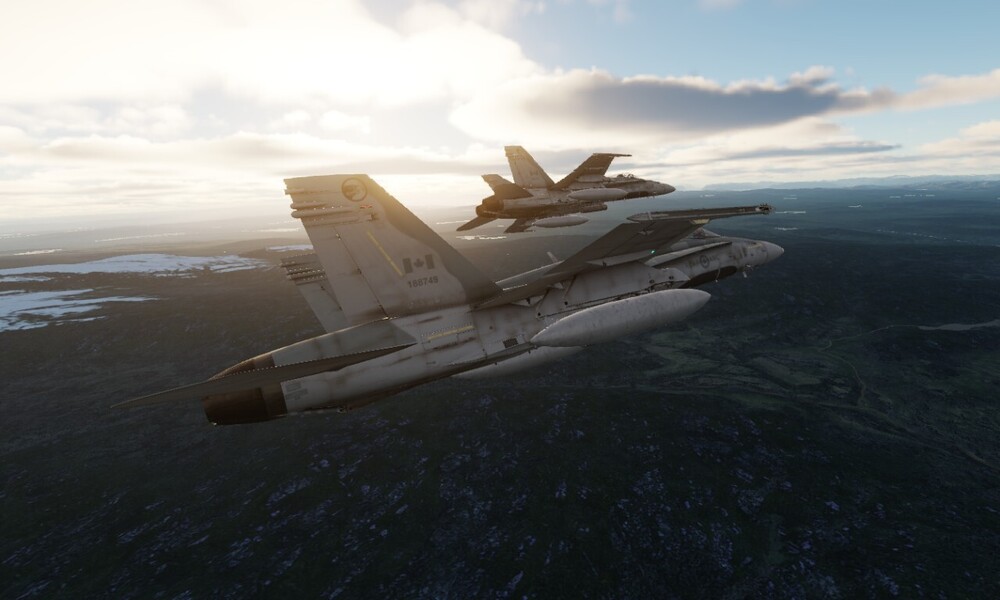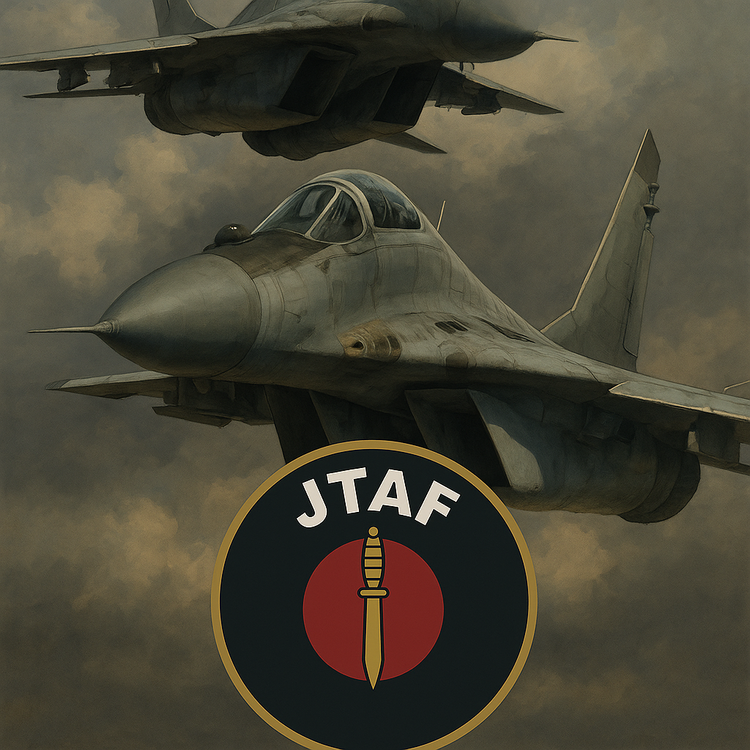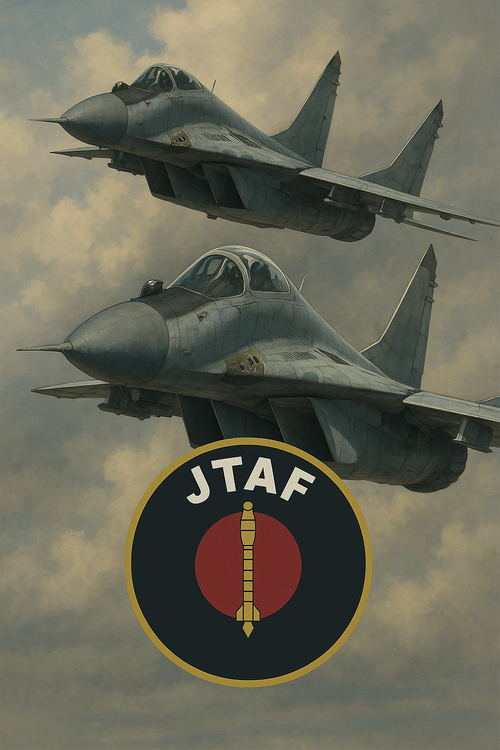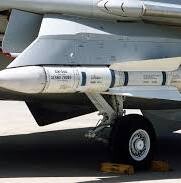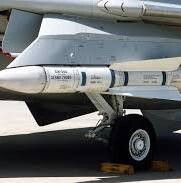-
Posts
60 -
Joined
-
Last visited
About vTF-77 Command
- Birthday January 19
Personal Information
-
Flight Simulators
DCS
-
Location
USA & Canada
-
Interests
Navy, Air Force, Marine Corps Operation
-
Occupation
Aviation
-
Website
https://www.vtf77.com/
Recent Profile Visitors
The recent visitors block is disabled and is not being shown to other users.
-
VIRTUAL TASK FORCE 77 Recruitment is OPEN for dedicated and experienced F/A-18C pilots. Who We Are: vTF-77 is a North American West Coast-based DCS task force specializing in cooperative fighter, attack, and expeditionary operations. We deliver a realistic experience with complex missions/campaigns along with a robust training program which leverages the talents of of our experienced and real life pilots to bring you up to speed. Our command teams bring a wealth of real-world and virtual expertise, ensuring you’ll master the skills needed to succeed in your airframe. We train twice a week Tuesdays and Thursdays @ 20:00 PDT. vTF-77 Is currently recruiting for the following SQNs: VFA-97 Warhawks (Carrier based naval operation) RCAF 409 TFS Nighthawks (Land based Air Force operations) What We Expect From You: A mature, Disciplined, and respectful attitude. Coachable with a willingness to learn. Commitment to attend at least 50% of training nights monthly. Reliable in and out of the cockpit. In possession of a solid HOTAS setup. Ownership (or ability to acquire) Kola, Syria, Persian Gulf, Sinai maps (NTTR highly recommended) and the Super Carrier module for naval ops. What You Get: High-end Training: Learn from seasoned instructors and real life pilots within their SQNs programs. Immersive Missions: Fly on dedicated servers with meticulously crafted missions and campaigns. Family/Friendly Oriented Community: Join a tight-knit, inclusive crew that’s all about the thrill and the excitement of combat aviation. Are you ready to take flight with vTF-77? Please check out the links below to apply and join the action! Our Discord is https://discord.gg/E8WNwgxhkN The virtual Task Force Website: https://www.vtf77.com/
-
- f/a-18c
- f/a-18c hornet
-
(and 6 more)
Tagged with:
-
VIRTUAL TASK FORCE 77 Recruitment is OPEN for dedicated and experienced F/A-18C pilots. Who We Are: vTF-77 is a North American West Coast-based DCS task force specializing in cooperative fighter, attack, and expeditionary operations. We deliver a realistic experience with complex missions/campaigns along with a robust training program which leverages the talents of of our experienced and real life pilots to bring you up to speed. Our command teams bring a wealth of real-world and virtual expertise, ensuring you’ll master the skills needed to succeed in your airframe. We train twice a week Tuesdays and Thursdays @ 20:00 PDT. vTF-77 Is currently recruiting for the following SQNs: VFA-97 Warhawks (Carrier based naval operation) RCAF 409 TFS Nighthawks (Land based Air Force operations) What We Expect From You: A mature, Disciplined, and respectful attitude. Coachable with a willingness to learn. Commitment to attend at least 50% of training nights monthly. Reliable in and out of the cockpit. In possession of a solid HOTAS setup. Ownership (or ability to acquire) Kola, Syria, Persian Gulf, Sinai maps (NTTR highly recommended) and the Super Carrier module for naval ops. What You Get: High-end Training: Learn from seasoned instructors and real life pilots within their SQNs programs. Immersive Missions: Fly on dedicated servers with meticulously crafted missions and campaigns. Family/Friendly Oriented Community: Join a tight-knit, inclusive crew that’s all about the thrill and the excitement of combat aviation. Are you ready to take flight with vTF-77? Please check out the links below to apply and join the action! Our Discord is https://discord.gg/E8WNwgxhkN The virtual Task Force Website: https://www.vtf77.com/
-
- f/a-18c
- f/a-18c hornet
-
(and 6 more)
Tagged with:
-
Come fly the new MIG 29 Apply info on the website https://www.vtf77.com/?utm_source=discord&utm_medium=social&utm_campaign=DCSF null
-

vTF-77 Pilot recruitment OPEN
vTF-77 Command replied to vTF-77 Command's topic in Squadron Recruiting
Come and fly new Mig 29 with JTAF Apply info on the website https://www.vtf77.com/?utm_source=discord&utm_medium=social&utm_campaign=DCSF- 12 replies
-
- navy flight ops
- air force
- (and 7 more)
-

vTF-77 Pilot & Controller Recruitment is OPEN.
vTF-77 Command replied to vTF-77 Command's topic in Jets Squadrons
Come fly the hornet! Apply info on the website https://www.vtf77.com/?utm_source=discord&utm_medium=social&utm_campaign=DCSF- 11 replies
-
- navy flight ops
- air force
- (and 11 more)
-
Come fly the hornet! Apply info on the website https://www.vtf77.com/?utm_source=discord&utm_medium=social&utm_campaign=DCSF
-

vTF-77 Pilot recruitment OPEN
vTF-77 Command replied to vTF-77 Command's topic in Squadron Recruiting
Come fly the hornet! Apply info on the website https://www.vtf77.com/?utm_source=discord&utm_medium=social&utm_campaign=DCSF- 12 replies
-
- navy flight ops
- air force
- (and 7 more)
-

vTF-77 Pilot & Controller Recruitment is OPEN.
vTF-77 Command replied to vTF-77 Command's topic in Jets Squadrons
F/A 18 - Hornet In the turbulent skies of the Cold War, where the specter of Soviet MiGs and missile batteries loomed large, the U.S. Navy faced a dilemma. Its carrier decks needed a versatile fighter—nimble enough to dogfight, rugged enough to strike ground targets, and compact enough to thrive in the cramped, salty world of naval aviation. The answer was the F/A-18 Hornet, a twin-engine marvel that would carve its legend as a workhorse of the skies, blending grit, precision, and adaptability across decades of conflict. This is its story. Genesis in Crisis The tale begins in the early 1970s, when the Navy’s aging F-4 Phantoms and A-7 Corsairs struggled to keep pace with emerging threats. The F-14 Tomcat, while a formidable interceptor, was costly and specialized. The Navy wanted a multirole fighter—capable of air-to-air combat and ground attack—that wouldn’t break the bank. Meanwhile, the Air Force was testing lightweight fighters in a competition that pitted General Dynamics’ YF-16 against Northrop’s YF-17 Cobra. The YF-16 won for the Air Force, but the Navy saw potential in the YF-17’s twin-engine design, ideal for carrier operations where redundancy meant survival. Northrop teamed with McDonnell Douglas to scale up the YF-17 into a naval beast. The result was the F/A-18 Hornet, named for its aggressive sting and versatility. By 1978, the first prototype took flight, a sleek, 40-foot-long jet with a 56-foot wingspan, powered by two General Electric F404 turbofans pumping 17,700 pounds of thrust each. It could hit Mach 1.8, climb to 50,000 feet, and carry 13,700 pounds of weapons, from AIM-9 Sidewinders to AGM-65 Mavericks. Its fly-by-wire controls and heads-up display made it a pilot’s dream, while strengthened landing gear and a tailhook endured the brutal slams of carrier decks. Early Days and Growing Pains The F/A-18A entered service with the Navy and Marine Corps in 1983, replacing A-7s and supplementing F-14s. Early Hornets weren’t flawless. The A and B models (single- and two-seat variants) had a shorter range—about 400 nautical miles—than desired, and their radar, the APG-65, lagged behind the F-15’s. Pilots grumbled about the cockpit’s cramped ergonomics. Yet, the Hornet’s agility shone. It could turn on a dime, and its multirole DNA let it switch from bombing runs to dogfights mid-mission. By 1985, squadrons like VFA-25 were deploying on carriers like USS Constellation, ready to face Soviet Backfires or Middle Eastern threats. The Hornet’s first combat came in 1986 during Operation El Dorado Canyon. F/A-18s from USS Coral Sea escorted Navy strikes on Libyan targets, fending off MiG-23s and SAMs. No kills, but the jet proved it could handle hot zones. The real test was the 1991 Gulf War. Hornets flew thousands of sorties, dropping GBU-12s on Iraqi tanks and engaging MiGs with AIM-7 Sparrows. On January 17, 1991, a VFA-81 Hornet piloted by Lt. Cmdr. Mark Fox shot down an Iraqi MiG-21 while simultaneously bombing an airfield—a multirole masterclass. Over 30,000 sorties later, the Hornet’s reliability and 90% mission success rate silenced critics Evolution of a Legend The Hornet grew sharper with time. The F/A-18C and D models (1987) brought night-attack capabilities, upgraded APG-73 radar, and compatibility with AGM-88 HARMs and JDAMs. Cockpit displays modernized, and range stretched to 500 nautical miles with external tanks. In the 1990s, Hornets patrolled Iraq’s no-fly zones, struck Serbian targets in Bosnia and Kosovo, and pounded Taliban caves in Afghanistan. Their precision made them ideal for urban strikes, minimizing civilian losses. By 2001, a new Hornet emerged: the F/A-18E/F Super Hornet. Bigger, brawnier, and born from budget battles that killed pricier programs, the Super Hornet was a 25% larger airframe with 35% more thrust, a 600-mile range, and 11 weapon stations. Its APG-79 AESA radar could track 20 targets at once, and stealthy design tweaks reduced its radar signature. Entering service in 2001, the E (single-seat) and F (two-seat) models became the Navy’s backbone, phasing out F-14s by 2006. The EA-18G Growler, a 2009 variant, turned the Super Hornet into an electronic warfare beast, jamming enemy radars with ALQ-218 pods. Challenges and Legacy The Hornet isn’t invincible. Its range limits carrier standoff distance against China’s DF-21D missiles. The F-35C, with stealth and sensor fusion, overshadows it. Maintenance hogs 20-30 hours per flight hour, and crashes—like 14 between 2015-2020—highlight risks of aging airframes. Yet, at $60 million per Super Hornet versus $110 million for an F-35C, it’s a budget-friendly warrior. The F/A-18’s story is one of a scrappy underdog rising to greatness. From a YF-17 reject to a carrier king, it’s flown 10 million hours, dropped 100,000 bombs, and downed enemy jets while jamming their radars. It’s the jet that does it all—dogfighter, bomber, jammer, lifeline for troops below. As it nears retirement, the Hornet’s legacy soars: a relentless, adaptable predator that ruled the skies and seas, stinging hard until the end. Come fly the hornet! Apply info on the website https://www.vtf77.com/?utm_source=discord&utm_medium=social&utm_campaign=DCSF- 11 replies
-
- navy flight ops
- air force
- (and 11 more)
-
F/A 18 - Hornet In the turbulent skies of the Cold War, where the specter of Soviet MiGs and missile batteries loomed large, the U.S. Navy faced a dilemma. Its carrier decks needed a versatile fighter—nimble enough to dogfight, rugged enough to strike ground targets, and compact enough to thrive in the cramped, salty world of naval aviation. The answer was the F/A-18 Hornet, a twin-engine marvel that would carve its legend as a workhorse of the skies, blending grit, precision, and adaptability across decades of conflict. This is its story. Genesis in Crisis The tale begins in the early 1970s, when the Navy’s aging F-4 Phantoms and A-7 Corsairs struggled to keep pace with emerging threats. The F-14 Tomcat, while a formidable interceptor, was costly and specialized. The Navy wanted a multirole fighter—capable of air-to-air combat and ground attack—that wouldn’t break the bank. Meanwhile, the Air Force was testing lightweight fighters in a competition that pitted General Dynamics’ YF-16 against Northrop’s YF-17 Cobra. The YF-16 won for the Air Force, but the Navy saw potential in the YF-17’s twin-engine design, ideal for carrier operations where redundancy meant survival. Northrop teamed with McDonnell Douglas to scale up the YF-17 into a naval beast. The result was the F/A-18 Hornet, named for its aggressive sting and versatility. By 1978, the first prototype took flight, a sleek, 40-foot-long jet with a 56-foot wingspan, powered by two General Electric F404 turbofans pumping 17,700 pounds of thrust each. It could hit Mach 1.8, climb to 50,000 feet, and carry 13,700 pounds of weapons, from AIM-9 Sidewinders to AGM-65 Mavericks. Its fly-by-wire controls and heads-up display made it a pilot’s dream, while strengthened landing gear and a tailhook endured the brutal slams of carrier decks. Early Days and Growing Pains The F/A-18A entered service with the Navy and Marine Corps in 1983, replacing A-7s and supplementing F-14s. Early Hornets weren’t flawless. The A and B models (single- and two-seat variants) had a shorter range—about 400 nautical miles—than desired, and their radar, the APG-65, lagged behind the F-15’s. Pilots grumbled about the cockpit’s cramped ergonomics. Yet, the Hornet’s agility shone. It could turn on a dime, and its multirole DNA let it switch from bombing runs to dogfights mid-mission. By 1985, squadrons like VFA-25 were deploying on carriers like USS Constellation, ready to face Soviet Backfires or Middle Eastern threats. The Hornet’s first combat came in 1986 during Operation El Dorado Canyon. F/A-18s from USS Coral Sea escorted Navy strikes on Libyan targets, fending off MiG-23s and SAMs. No kills, but the jet proved it could handle hot zones. The real test was the 1991 Gulf War. Hornets flew thousands of sorties, dropping GBU-12s on Iraqi tanks and engaging MiGs with AIM-7 Sparrows. On January 17, 1991, a VFA-81 Hornet piloted by Lt. Cmdr. Mark Fox shot down an Iraqi MiG-21 while simultaneously bombing an airfield—a multirole masterclass. Over 30,000 sorties later, the Hornet’s reliability and 90% mission success rate silenced critics Evolution of a Legend The Hornet grew sharper with time. The F/A-18C and D models (1987) brought night-attack capabilities, upgraded APG-73 radar, and compatibility with AGM-88 HARMs and JDAMs. Cockpit displays modernized, and range stretched to 500 nautical miles with external tanks. In the 1990s, Hornets patrolled Iraq’s no-fly zones, struck Serbian targets in Bosnia and Kosovo, and pounded Taliban caves in Afghanistan. Their precision made them ideal for urban strikes, minimizing civilian losses. By 2001, a new Hornet emerged: the F/A-18E/F Super Hornet. Bigger, brawnier, and born from budget battles that killed pricier programs, the Super Hornet was a 25% larger airframe with 35% more thrust, a 600-mile range, and 11 weapon stations. Its APG-79 AESA radar could track 20 targets at once, and stealthy design tweaks reduced its radar signature. Entering service in 2001, the E (single-seat) and F (two-seat) models became the Navy’s backbone, phasing out F-14s by 2006. The EA-18G Growler, a 2009 variant, turned the Super Hornet into an electronic warfare beast, jamming enemy radars with ALQ-218 pods. Challenges and Legacy The Hornet isn’t invincible. Its range limits carrier standoff distance against China’s DF-21D missiles. The F-35C, with stealth and sensor fusion, overshadows it. Maintenance hogs 20-30 hours per flight hour, and crashes—like 14 between 2015-2020—highlight risks of aging airframes. Yet, at $60 million per Super Hornet versus $110 million for an F-35C, it’s a budget-friendly warrior. The F/A-18’s story is one of a scrappy underdog rising to greatness. From a YF-17 reject to a carrier king, it’s flown 10 million hours, dropped 100,000 bombs, and downed enemy jets while jamming their radars. It’s the jet that does it all—dogfighter, bomber, jammer, lifeline for troops below. As it nears retirement, the Hornet’s legacy soars: a relentless, adaptable predator that ruled the skies and seas, stinging hard until the end. Come fly the hornet! Apply info on the website https://www.vtf77.com/?utm_source=discord&utm_medium=social&utm_campaign=DCSF
-
F/A 18 - Hornet In the turbulent skies of the Cold War, where the specter of Soviet MiGs and missile batteries loomed large, the U.S. Navy faced a dilemma. Its carrier decks needed a versatile fighter—nimble enough to dogfight, rugged enough to strike ground targets, and compact enough to thrive in the cramped, salty world of naval aviation. The answer was the F/A-18 Hornet, a twin-engine marvel that would carve its legend as a workhorse of the skies, blending grit, precision, and adaptability across decades of conflict. This is its story. Genesis in Crisis The tale begins in the early 1970s, when the Navy’s aging F-4 Phantoms and A-7 Corsairs struggled to keep pace with emerging threats. The F-14 Tomcat, while a formidable interceptor, was costly and specialized. The Navy wanted a multirole fighter—capable of air-to-air combat and ground attack—that wouldn’t break the bank. Meanwhile, the Air Force was testing lightweight fighters in a competition that pitted General Dynamics’ YF-16 against Northrop’s YF-17 Cobra. The YF-16 won for the Air Force, but the Navy saw potential in the YF-17’s twin-engine design, ideal for carrier operations where redundancy meant survival. Northrop teamed with McDonnell Douglas to scale up the YF-17 into a naval beast. The result was the F/A-18 Hornet, named for its aggressive sting and versatility. By 1978, the first prototype took flight, a sleek, 40-foot-long jet with a 56-foot wingspan, powered by two General Electric F404 turbofans pumping 17,700 pounds of thrust each. It could hit Mach 1.8, climb to 50,000 feet, and carry 13,700 pounds of weapons, from AIM-9 Sidewinders to AGM-65 Mavericks. Its fly-by-wire controls and heads-up display made it a pilot’s dream, while strengthened landing gear and a tailhook endured the brutal slams of carrier decks. Early Days and Growing Pains The F/A-18A entered service with the Navy and Marine Corps in 1983, replacing A-7s and supplementing F-14s. Early Hornets weren’t flawless. The A and B models (single- and two-seat variants) had a shorter range—about 400 nautical miles—than desired, and their radar, the APG-65, lagged behind the F-15’s. Pilots grumbled about the cockpit’s cramped ergonomics. Yet, the Hornet’s agility shone. It could turn on a dime, and its multirole DNA let it switch from bombing runs to dogfights mid-mission. By 1985, squadrons like VFA-25 were deploying on carriers like USS Constellation, ready to face Soviet Backfires or Middle Eastern threats. The Hornet’s first combat came in 1986 during Operation El Dorado Canyon. F/A-18s from USS Coral Sea escorted Navy strikes on Libyan targets, fending off MiG-23s and SAMs. No kills, but the jet proved it could handle hot zones. The real test was the 1991 Gulf War. Hornets flew thousands of sorties, dropping GBU-12s on Iraqi tanks and engaging MiGs with AIM-7 Sparrows. On January 17, 1991, a VFA-81 Hornet piloted by Lt. Cmdr. Mark Fox shot down an Iraqi MiG-21 while simultaneously bombing an airfield—a multirole masterclass. Over 30,000 sorties later, the Hornet’s reliability and 90% mission success rate silenced critics Evolution of a Legend The Hornet grew sharper with time. The F/A-18C and D models (1987) brought night-attack capabilities, upgraded APG-73 radar, and compatibility with AGM-88 HARMs and JDAMs. Cockpit displays modernized, and range stretched to 500 nautical miles with external tanks. In the 1990s, Hornets patrolled Iraq’s no-fly zones, struck Serbian targets in Bosnia and Kosovo, and pounded Taliban caves in Afghanistan. Their precision made them ideal for urban strikes, minimizing civilian losses. By 2001, a new Hornet emerged: the F/A-18E/F Super Hornet. Bigger, brawnier, and born from budget battles that killed pricier programs, the Super Hornet was a 25% larger airframe with 35% more thrust, a 600-mile range, and 11 weapon stations. Its APG-79 AESA radar could track 20 targets at once, and stealthy design tweaks reduced its radar signature. Entering service in 2001, the E (single-seat) and F (two-seat) models became the Navy’s backbone, phasing out F-14s by 2006. The EA-18G Growler, a 2009 variant, turned the Super Hornet into an electronic warfare beast, jamming enemy radars with ALQ-218 pods. Challenges and Legacy The Hornet isn’t invincible. Its range limits carrier standoff distance against China’s DF-21D missiles. The F-35C, with stealth and sensor fusion, overshadows it. Maintenance hogs 20-30 hours per flight hour, and crashes—like 14 between 2015-2020—highlight risks of aging airframes. Yet, at $60 million per Super Hornet versus $110 million for an F-35C, it’s a budget-friendly warrior. The F/A-18’s story is one of a scrappy underdog rising to greatness. From a YF-17 reject to a carrier king, it’s flown 10 million hours, dropped 100,000 bombs, and downed enemy jets while jamming their radars. It’s the jet that does it all—dogfighter, bomber, jammer, lifeline for troops below. As it nears retirement, the Hornet’s legacy soars: a relentless, adaptable predator that ruled the skies and seas, stinging hard until the end. Come fly the hornet! Apply info on the website https://www.vtf77.com/?utm_source=discord&utm_medium=social&utm_campaign=DCSF
-

vTF-77 Pilot recruitment OPEN
vTF-77 Command replied to vTF-77 Command's topic in Squadron Recruiting
F/A 18 - Hornet In the turbulent skies of the Cold War, where the specter of Soviet MiGs and missile batteries loomed large, the U.S. Navy faced a dilemma. Its carrier decks needed a versatile fighter—nimble enough to dogfight, rugged enough to strike ground targets, and compact enough to thrive in the cramped, salty world of naval aviation. The answer was the F/A-18 Hornet, a twin-engine marvel that would carve its legend as a workhorse of the skies, blending grit, precision, and adaptability across decades of conflict. This is its story. Genesis in Crisis The tale begins in the early 1970s, when the Navy’s aging F-4 Phantoms and A-7 Corsairs struggled to keep pace with emerging threats. The F-14 Tomcat, while a formidable interceptor, was costly and specialized. The Navy wanted a multirole fighter—capable of air-to-air combat and ground attack—that wouldn’t break the bank. Meanwhile, the Air Force was testing lightweight fighters in a competition that pitted General Dynamics’ YF-16 against Northrop’s YF-17 Cobra. The YF-16 won for the Air Force, but the Navy saw potential in the YF-17’s twin-engine design, ideal for carrier operations where redundancy meant survival. Northrop teamed with McDonnell Douglas to scale up the YF-17 into a naval beast. The result was the F/A-18 Hornet, named for its aggressive sting and versatility. By 1978, the first prototype took flight, a sleek, 40-foot-long jet with a 56-foot wingspan, powered by two General Electric F404 turbofans pumping 17,700 pounds of thrust each. It could hit Mach 1.8, climb to 50,000 feet, and carry 13,700 pounds of weapons, from AIM-9 Sidewinders to AGM-65 Mavericks. Its fly-by-wire controls and heads-up display made it a pilot’s dream, while strengthened landing gear and a tailhook endured the brutal slams of carrier decks. Early Days and Growing Pains The F/A-18A entered service with the Navy and Marine Corps in 1983, replacing A-7s and supplementing F-14s. Early Hornets weren’t flawless. The A and B models (single- and two-seat variants) had a shorter range—about 400 nautical miles—than desired, and their radar, the APG-65, lagged behind the F-15’s. Pilots grumbled about the cockpit’s cramped ergonomics. Yet, the Hornet’s agility shone. It could turn on a dime, and its multirole DNA let it switch from bombing runs to dogfights mid-mission. By 1985, squadrons like VFA-25 were deploying on carriers like USS Constellation, ready to face Soviet Backfires or Middle Eastern threats. The Hornet’s first combat came in 1986 during Operation El Dorado Canyon. F/A-18s from USS Coral Sea escorted Navy strikes on Libyan targets, fending off MiG-23s and SAMs. No kills, but the jet proved it could handle hot zones. The real test was the 1991 Gulf War. Hornets flew thousands of sorties, dropping GBU-12s on Iraqi tanks and engaging MiGs with AIM-7 Sparrows. On January 17, 1991, a VFA-81 Hornet piloted by Lt. Cmdr. Mark Fox shot down an Iraqi MiG-21 while simultaneously bombing an airfield—a multirole masterclass. Over 30,000 sorties later, the Hornet’s reliability and 90% mission success rate silenced critics Evolution of a Legend The Hornet grew sharper with time. The F/A-18C and D models (1987) brought night-attack capabilities, upgraded APG-73 radar, and compatibility with AGM-88 HARMs and JDAMs. Cockpit displays modernized, and range stretched to 500 nautical miles with external tanks. In the 1990s, Hornets patrolled Iraq’s no-fly zones, struck Serbian targets in Bosnia and Kosovo, and pounded Taliban caves in Afghanistan. Their precision made them ideal for urban strikes, minimizing civilian losses. By 2001, a new Hornet emerged: the F/A-18E/F Super Hornet. Bigger, brawnier, and born from budget battles that killed pricier programs, the Super Hornet was a 25% larger airframe with 35% more thrust, a 600-mile range, and 11 weapon stations. Its APG-79 AESA radar could track 20 targets at once, and stealthy design tweaks reduced its radar signature. Entering service in 2001, the E (single-seat) and F (two-seat) models became the Navy’s backbone, phasing out F-14s by 2006. The EA-18G Growler, a 2009 variant, turned the Super Hornet into an electronic warfare beast, jamming enemy radars with ALQ-218 pods. Challenges and Legacy The Hornet isn’t invincible. Its range limits carrier standoff distance against China’s DF-21D missiles. The F-35C, with stealth and sensor fusion, overshadows it. Maintenance hogs 20-30 hours per flight hour, and crashes—like 14 between 2015-2020—highlight risks of aging airframes. Yet, at $60 million per Super Hornet versus $110 million for an F-35C, it’s a budget-friendly warrior. The F/A-18’s story is one of a scrappy underdog rising to greatness. From a YF-17 reject to a carrier king, it’s flown 10 million hours, dropped 100,000 bombs, and downed enemy jets while jamming their radars. It’s the jet that does it all—dogfighter, bomber, jammer, lifeline for troops below. As it nears retirement, the Hornet’s legacy soars: a relentless, adaptable predator that ruled the skies and seas, stinging hard until the end. Come fly the hornet! Apply info on the website https://www.vtf77.com/?utm_source=discord&utm_medium=social&utm_campaign=DCSF- 12 replies
-
- navy flight ops
- air force
- (and 7 more)
-
AIM-54 Phoenix In the frost of the Cold War, as Soviet bombers loomed over the seas, the U.S. Navy sought a weapon to safeguard its carriers. At Hughes Aircraft, engineers crafted the AIM-54 Phoenix, a missile born to dominate the skies. Paired with the F-14 Tomcat, this 1,000-pound titan, stretching 13 feet, could strike six targets over 100 miles away, soaring at Mach 5 with an active radar seeker that hunted on its own. First launched in 1966, it joined the fleet by 1974, a symbol of American ingenuity. The Phoenix’s AWG-9 radar, synced with the Tomcat, could track a swarm of enemies, making it a fleet’s fiery shield. Pilots, calling “Fox Three,” unleashed it in training, awed by its reach. Iran’s F-14s, gifted before the 1979 revolution, reportedly wielded it in the Iran-Iraq War, claiming up to 60 kills, though proof remained elusive. For the U.S., the Phoenix stayed silent in conflicts like the 1991 Gulf War, its million-dollar cost and strict rules keeping it leashed. By 2004, as the F-14 retired, the Phoenix was shelved, outshined by the versatile AIM-120 AMRAAM. In 2007, a demilitarized Phoenix roared again, testing hypersonic flight for NASA at Mach 5. Its legacy endures in modern missiles, a testament to its vision. The AIM-54, named for rebirth, never burned bright in battle but left a trail of innovation, a guardian whose shadow still lingers in the skies. Key Features ● Range: Over 100 miles (185 km), with a maximum of ~99 mi (160 km) specified. ● Speed: Up to Mach 5. ● Weight: ~1,000 lb (500 kg), with a 135 lb warhead. ● Guidance: Semi-active radar for mid-course, active radar for terminal phase, with mid-course updates from the F-14’s radar. ● Launch: Ejection launch via LAU-93 or LAU-132 launchers, with a solid propellant rocket motor. Come shoot the phoenix Apply info on the website https://www.vtf77.com/?utm_source=discord&utm_medium=social&utm_campaign=DCSF
-

vTF-77 Pilot & Controller Recruitment is OPEN.
vTF-77 Command replied to vTF-77 Command's topic in Jets Squadrons
AIM-54 Phoenix In the frost of the Cold War, as Soviet bombers loomed over the seas, the U.S. Navy sought a weapon to safeguard its carriers. At Hughes Aircraft, engineers crafted the AIM-54 Phoenix, a missile born to dominate the skies. Paired with the F-14 Tomcat, this 1,000-pound titan, stretching 13 feet, could strike six targets over 100 miles away, soaring at Mach 5 with an active radar seeker that hunted on its own. First launched in 1966, it joined the fleet by 1974, a symbol of American ingenuity. The Phoenix’s AWG-9 radar, synced with the Tomcat, could track a swarm of enemies, making it a fleet’s fiery shield. Pilots, calling “Fox Three,” unleashed it in training, awed by its reach. Iran’s F-14s, gifted before the 1979 revolution, reportedly wielded it in the Iran-Iraq War, claiming up to 60 kills, though proof remained elusive. For the U.S., the Phoenix stayed silent in conflicts like the 1991 Gulf War, its million-dollar cost and strict rules keeping it leashed. By 2004, as the F-14 retired, the Phoenix was shelved, outshined by the versatile AIM-120 AMRAAM. In 2007, a demilitarized Phoenix roared again, testing hypersonic flight for NASA at Mach 5. Its legacy endures in modern missiles, a testament to its vision. The AIM-54, named for rebirth, never burned bright in battle but left a trail of innovation, a guardian whose shadow still lingers in the skies. Key Features ● Range: Over 100 miles (185 km), with a maximum of ~99 mi (160 km) specified. ● Speed: Up to Mach 5. ● Weight: ~1,000 lb (500 kg), with a 135 lb warhead. ● Guidance: Semi-active radar for mid-course, active radar for terminal phase, with mid-course updates from the F-14’s radar. ● Launch: Ejection launch via LAU-93 or LAU-132 launchers, with a solid propellant rocket motor. Come shoot the phoenix Apply info on the website https://www.vtf77.com/?utm_source=discord&utm_medium=social&utm_campaign=DCSF- 11 replies
-
- navy flight ops
- air force
- (and 11 more)
-
AIM-54 Phoenix In the frost of the Cold War, as Soviet bombers loomed over the seas, the U.S. Navy sought a weapon to safeguard its carriers. At Hughes Aircraft, engineers crafted the AIM-54 Phoenix, a missile born to dominate the skies. Paired with the F-14 Tomcat, this 1,000-pound titan, stretching 13 feet, could strike six targets over 100 miles away, soaring at Mach 5 with an active radar seeker that hunted on its own. First launched in 1966, it joined the fleet by 1974, a symbol of American ingenuity. The Phoenix’s AWG-9 radar, synced with the Tomcat, could track a swarm of enemies, making it a fleet’s fiery shield. Pilots, calling “Fox Three,” unleashed it in training, awed by its reach. Iran’s F-14s, gifted before the 1979 revolution, reportedly wielded it in the Iran-Iraq War, claiming up to 60 kills, though proof remained elusive. For the U.S., the Phoenix stayed silent in conflicts like the 1991 Gulf War, its million-dollar cost and strict rules keeping it leashed. By 2004, as the F-14 retired, the Phoenix was shelved, outshined by the versatile AIM-120 AMRAAM. In 2007, a demilitarized Phoenix roared again, testing hypersonic flight for NASA at Mach 5. Its legacy endures in modern missiles, a testament to its vision. The AIM-54, named for rebirth, never burned bright in battle but left a trail of innovation, a guardian whose shadow still lingers in the skies. Key Features ● Range: Over 100 miles (185 km), with a maximum of ~99 mi (160 km) specified. ● Speed: Up to Mach 5. ● Weight: ~1,000 lb (500 kg), with a 135 lb warhead. ● Guidance: Semi-active radar for mid-course, active radar for terminal phase, with mid-course updates from the F-14’s radar. ● Launch: Ejection launch via LAU-93 or LAU-132 launchers, with a solid propellant rocket motor. Come shoot the phoenix Apply info on the website https://www.vtf77.com/?utm_source=discord&utm_medium=social&utm_campaign=DCSF

